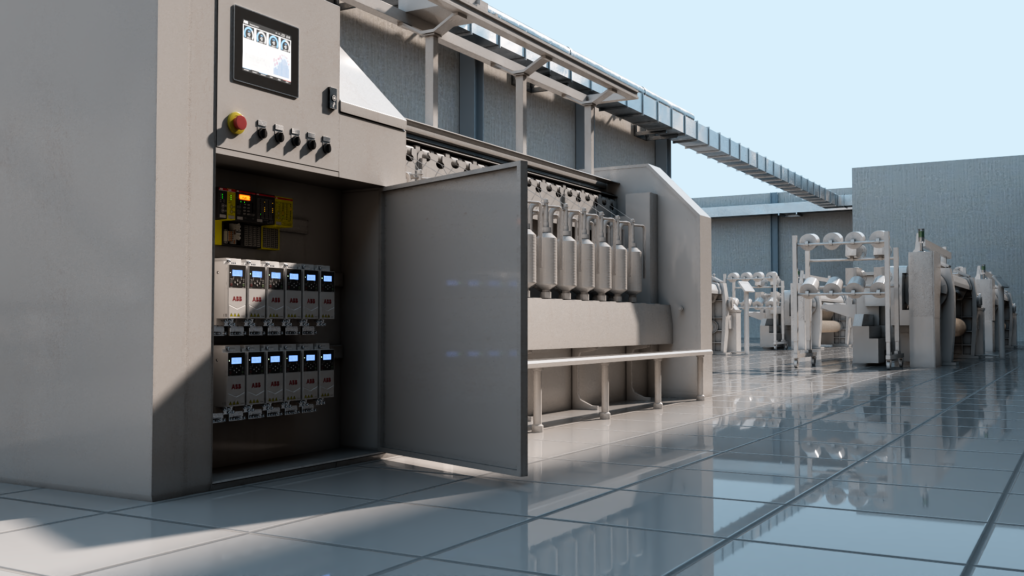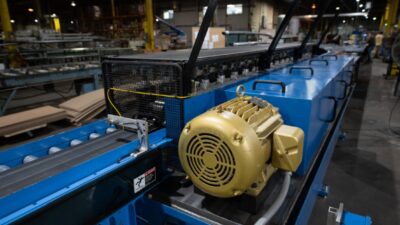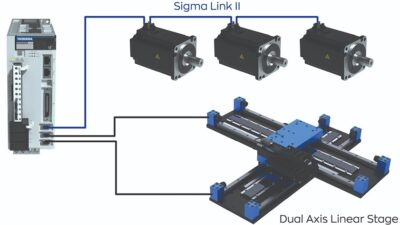Eroding standards: The overlooked risks of corrosion in variable-speed drives. Key techniques can avoid costly failures.

Insights to avoid industrial drive corrosion
- Recognize the hidden threats and mechanisms of corrosion in drives
- Evaluate the limitations of existing corrosion protection standards and testing
- Apply best practices to mitigate corrosion risks in industrial settings
Corrosion poses a significant yet often overlooked threat to the reliability and life span of variable speed drives (VSDs) in harsh industrial environments. Explore the hidden mechanisms of corrosion and actionable strategies for safeguarding drive systems against costly failures.
In the world of industrial automation, performance, energy efficiency, and system uptime are firmly at the front of operators’ minds. Yet, one of the most persistent and costly risks to long-term reliability often goes unnoticed: corrosion. In fact, the Association for Materials Protection and Performance estimates that corrosion is responsible for businesses losing a staggering $2.5 trillion a year.
For variable speed drives (VSDs), which precisely control electric motor operation in countless applications, corrosion remains a silent but escalating challenge. In sectors like water treatment, plastics, rubber and mining, where exposure to harsh environmental conditions is the norm, corrosion has grown as a hidden cause of unexpected drive failure.
Unlike mechanical wear, corrosion doesn’t simply degrade equipment over time; it can render a drive inoperable suddenly and without warning, often outside the warranty period. When a drive fails, everything stops, and downtime costs can easily exceed $125,000 per hour. This makes corrosion one of the most critical factors in determining drive reliability, and one of the least understood.

What corrosion really means for drives
Corrosion is typically defined as the degradation of a material due to chemical interactions with its environment. In electronics, this goes further. Electronic corrosion refers to the deterioration of electrical components and materials, such as printed circuit boards (PCBs), insulated-gate bipolar transistors (IGBTs), thermal interface materials and connectors — because of airborne contaminants, high humidity and corrosive gases. It can affect both visible drive components and hidden, internal subassemblies.
The risks also extend to polymer-based components, like seals and housings. These face their own version of corrosion, typically through chemical attack or physical interaction. Heat, solvents, oxidizers, and curatives can alter rubber and plastic materials that insulate or seal drives. Degradation may not be visible, and polymer components often appear intact while losing their mechanical integrity over time, potentially causing leaks, unintended fitment or enclosure failures.
Compounding the risk, modern drives house more densely packed electronics that produce more heat and require higher airflows, which makes them harder to protect using traditional sealing approaches.
Not all corrosion is visible, and not all visible corrosion matters. Rust spots on a casing, while unsightly, are often cosmetic. More dangerous is when silver whiskers or creep corrosion quietly develop on a circuit board. Silver whiskers, which are hair-like structures caused by sulfur contamination or silver sulfide residues, can lead to unintended current pathways and electrical shorts. These faults are difficult to diagnose and may present as intermittent failures that recur unpredictably before culminating in permanent breakdown.

An increasingly common problem: Electronic corrosion
Electronic corrosion is not isolated to a single application or geography. It is prevalent in any environment with high humidity, fluctuating temperature or airborne chemical exposure. That includes critical sectors such as tire manufacturing, plastics extrusion, pulp and paper production and wastewater treatment.
In the rubber sector, for example, sulfur and peroxide-based curing agents used in vulcanization can produce corrosive byproducts such as sulfur dioxide or silver sulfate. These byproducts linger in the air and settle on electronic components and connections. The result? Accelerated corrosion in drives not designed for high-sulfur environments.
A tire manufacturer may see drive failures as often as every 16 months unless proactive steps are taken. Likewise, the frequent presence of carbon-rich and petrochemical dust particles in rubber and plastics manufacturing makes air filtration crucial. Once moistened, these particles worsen the problem by enabling ion migration: effectively providing conductive pathways for corrosion to spread across components.
Corrosion risk is particularly acute in hot and humid regions, where many high-growth rubber and plastics markets are located. Countries like India, Indonesia, and emerging regions in Africa contend with temperatures above 45°C and elevated moisture levels on a regular basis, often amid already corrosive industrial processes.
Many other industries are affected too. In wastewater plants, corrosive agents like hydrogen sulfide (H2S) are common due to biological decomposition. In pulp and paper mills, sulfur dioxide (SO2) is a concern. In all cases, gaseous pollutants can penetrate control rooms and electronics housings unless very specific air filtration and material sealing requirements are met.
The current standards are outdated
Part of the challenge is the lack of clarity around older corrosion standards for electronic components. Environmental classes have been defined by standards like IEC 60721-3-3:2002, which is often cited in drive specifications using terms like “3C3.” However that standard was not designed with real-world testing in mind. It defines environments based on the theoretical concentration of eight contaminant gases plus salt spray, which lack any consistent testing method or specified pass/fail criteria.
As a result, component-level claims of “3C3 coating” often provide a false sense of security. A PCB coating alone does not protect the entire drive, nor do vague labels quantify how long a product can survive in a corrosive environment.
New testing methods reveal the true impact of drive corrosion
To overcome that ambiguity, the revised IEC 60721-3-3:2019 standard, comparable with ANSI/ISA-71.04-2013 in the U.S., now classifies environmental corrosiveness by measuring the thickness of metal corrosion (in angstroms) on defined test surfaces over 30 days. Real environments are thus categorized by their impact rather than by complex chemical inputs. G-classifications (G1 to GX) establish clear thresholds for exposure severity.
However, the new standard is not itself a test procedure; it categorizes the environment but does not define how manufacturers should test equipment for resistance.
To bridge this gap, ABB has developed and adopted a new testing protocol for VSDs, based on accelerated life testing. Collaborating with Lappeenranta-Lahti University of Technology in Finland, complete, energized drive units were subjected to mixed-gas environments using common industrial pollutants: chlorine, nitrogen dioxide, sulfur dioxide and hydrogen sulfide.
These tests were deliberately conducted at higher-than-normal concentrations and elevated humidity and temperature levels to accelerate and simulate months or years of exposure. The drives were monitored for performance degradation during operation and analyzed post-exposure via thermal imaging, X-ray analysis and electron microscopy.
This level of testing is far more robust than simply coating a circuit board. It assesses the corrosion resistance and real-world reliability of the complete system, from cooling fans and connectors to capacitor terminals and communication boards.
Why full-system testing matters for VSDs
The advantage of testing whole operational drives is twofold. First, it confirms the combined effect of all protective measures: coatings, IP-rated enclosures, sealed connectors and board treatments. Second, it reveals the vulnerabilities that are often overlooked — for instance, where corrosion may enter through improperly specified cabinet seals or accumulate on unprotected components like fans or DC chokes.
Testing has shown that IP55 (UL Type 12) protected drives are significantly more resistant to corrosion than IP21 (UL Type 1) drives. When operated in C4-class environments (or ANSI/ISA G3/GX environments up to 2,300Å/30d), these drives performed reliably throughout the test period.
For harsher conditions, such as tire manufacturing areas exposed to silver sulfate or elevated sulfur dioxide during rubber curing, ABB has developed enhanced VSD variants with additional protections. These ruggedized models are rated for C5/CX classes and GX environments up to 8,000Å/30d.
Five key strategies to mitigate VSD corrosion
There is no one-size-fits-all solution to corrosion prevention. However, several best practices can help:
1. Use complete high-IP enclosures and ensure proper cabinet sealing: Gaskets, O-rings and sealed terminal connections can minimize ingress of dust, moisture, and gases.
2. Specify drives with tested corrosion-resistant coatings: This includes conformal coatings on PCBs, protective seals on IGBTs and connectors and treated metal surfaces.
3. Control ambient conditions: Regular monitoring and management of temperature and humidity, plus environmental isolation when possible, can prevent condensation and contaminants accumulation.
4. Install proper air filtration for surrounding areas: Deploy MERV 8 filters for recirculated air and MERV 11 to MERV 13 filters for outdoor intake air in control rooms.
5. Clean and maintain regularly: Cleaning of dust-prone zones with electronics-safe solvents prevents buildup. However, cleaning should be undertaken carefully, as inappropriate methods can leave behind conductive or corrosive residues.
Don’t get caught off guard with corrosion in industrial drives
As corrosion-related failures continue to rise, especially in emerging industrial markets and complex processing environments, asset lifetime and system reliability cannot be taken for granted. Although some signs of corrosion are detectable, many are subtle or internal. In the worst cases, drive failures happen suddenly, out of warranty and without warning.
What matters most is drive selection, based on verified testing, appropriate environmental classification, and a comprehensive understanding of how corrosion works at electronic and materials levels.
For any industrial operator, the price of overlooking corrosion resistance is far more than the cost of a replacement component. It can mean extended downtime, lost production, damaged reputation and compromised safety.
Corrosion often works unseen. But with the right systems, standards and designs, it can be kept under control.
Fausto Belotti is the global segment manager for rubber and plastics at ABB Drive Products. Edited by Mark T. Hoske, editor-in-chief, Control Engineering, WTWH Media, [email protected].
KEYWORDS
Industrial variable-speed drives, VSD, corrosion prevention
CONSIDER THIS
How are you extending reliability of industrial drives, especially in harsh environments?
ONLINE




